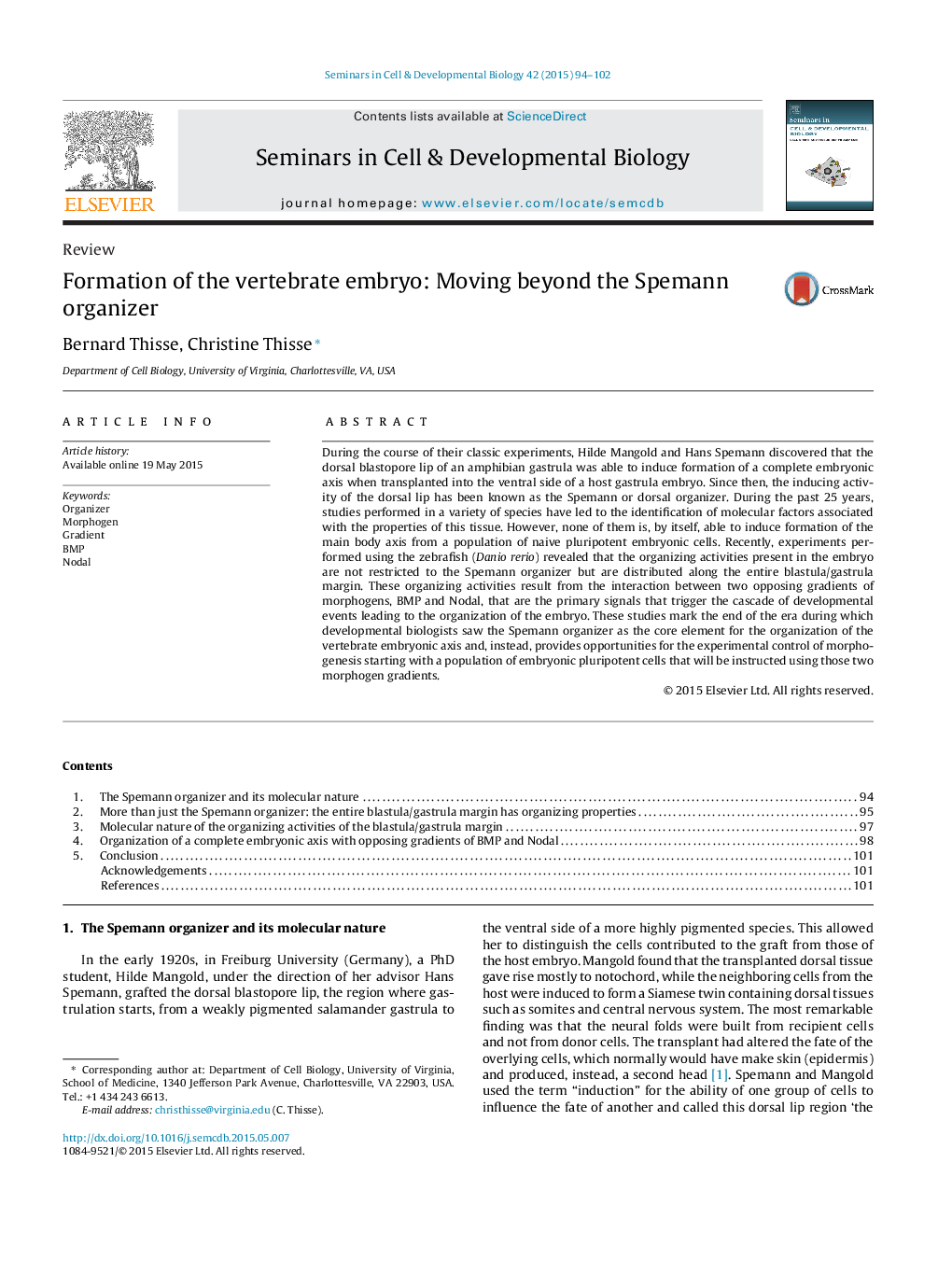| Article ID | Journal | Published Year | Pages | File Type |
|---|---|---|---|---|
| 2202565 | Seminars in Cell & Developmental Biology | 2015 | 9 Pages |
During the course of their classic experiments, Hilde Mangold and Hans Spemann discovered that the dorsal blastopore lip of an amphibian gastrula was able to induce formation of a complete embryonic axis when transplanted into the ventral side of a host gastrula embryo. Since then, the inducing activity of the dorsal lip has been known as the Spemann or dorsal organizer. During the past 25 years, studies performed in a variety of species have led to the identification of molecular factors associated with the properties of this tissue. However, none of them is, by itself, able to induce formation of the main body axis from a population of naive pluripotent embryonic cells. Recently, experiments performed using the zebrafish (Danio rerio) revealed that the organizing activities present in the embryo are not restricted to the Spemann organizer but are distributed along the entire blastula/gastrula margin. These organizing activities result from the interaction between two opposing gradients of morphogens, BMP and Nodal, that are the primary signals that trigger the cascade of developmental events leading to the organization of the embryo. These studies mark the end of the era during which developmental biologists saw the Spemann organizer as the core element for the organization of the vertebrate embryonic axis and, instead, provides opportunities for the experimental control of morphogenesis starting with a population of embryonic pluripotent cells that will be instructed using those two morphogen gradients.
